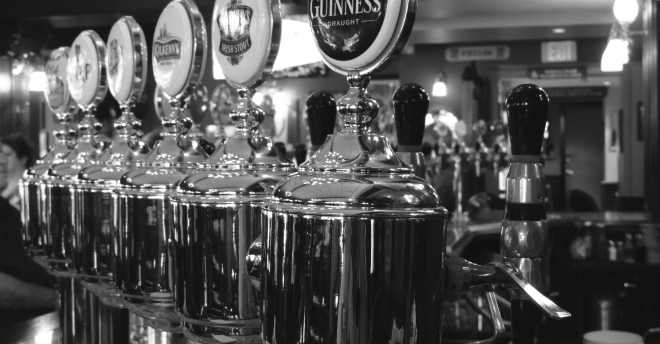The process of brewing beer dates back over 5000 years. It started off similar to what we call “microbreweries” today. Traditionally, specialists (a head brewer!) led the operation and passed their expertise down to trained apprentices. Only local and easily accessible ingredients such as dried flowers, herbs, and tree roots were used in the brewing process. Looking at today’s modern standards, beer has come a long way from where it started.
When the Industrial Revolution began in the 1700s, the world quickly began to change, and beer suddenly had the opportunity to become a global industry. New inventions gave brewers insight into the fermentation process, helping them regulate temperature and avoid inconsistencies. Ultimately, these tools made it easier for anyone to try their own hand at brewing!
As U.S. immigration increased in the early 1900s, the beer industry grew. Immigrants loved beer. Styles of beer became more diverse as a result and we still see those influences in brewing today. (Looking at you lagers!)
At its height in the early 1900s there were nearly 1,500 breweries in the U.S., but the Prohibition Act brought the rapidly expanding beer industry to a halt in 1920. Under Prohibition, “near beer” could be produced (beer with nearly no alcohol content), but it was hard to compete with cheap bathtub liquor. Yum!
How did breweries make it through Prohibition and The Great Depression you might ask? …Ice cream! As well as soft drinks, dyes, candy, ceramics, cheese, etc. In order to survive, companies utilized brewing equipment to make other products. Some even began selling malt extract to “sweeten bread,” in other words to brew beer in your home. In fact, enough malt was being sold in cities every week for 800,000 loaves of bread (actually it was more like 400,000 pints of beer). Thus began the tradition of home brewing.
Due to an oversight in the way the law was written that ended prohibition, brewing beer at home (above 0.5%) remained illegal. It definitely didn’t stop people from doing it, but during this time big breweries perfected the art of the cheap, super drinkable beer, but they lacked variety. After home brewing’s legalization in 1978, brewing popularity exploded and has continued to grow.
The home brewing movement provided the craft beer industry with many of its customers and brewers. Without this influence, beer would not be in the state it is today, with styles that didn’t even exist a hundred years ago in thousands of varieties. Currently, the U.S. has over 6,000 craft breweries. Without Prohibition pushing the home brewing movement, craft beer as we know it may have ceased to exist!
The Malted Meeple embraces the benefits of the craft beer movement by serving a wide range of varieties…from standard well-known craft beer to styles that are a bit left of center. Ask your Meeple bartender about their favorite beer. Whatever answer they give, just know that each delicious pint comes from a rich history of traditions across the world.
 Lauren Edmunds loves crafting, collecting obscure antiques, and all things creepy. She enjoys trying new beer and learning about brewing, and is the beer curator and Assistant Manager for The Malted Meeple.
Lauren Edmunds loves crafting, collecting obscure antiques, and all things creepy. She enjoys trying new beer and learning about brewing, and is the beer curator and Assistant Manager for The Malted Meeple.

